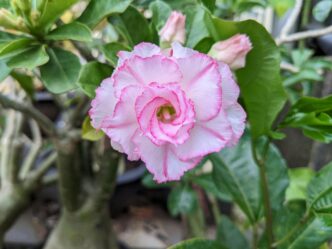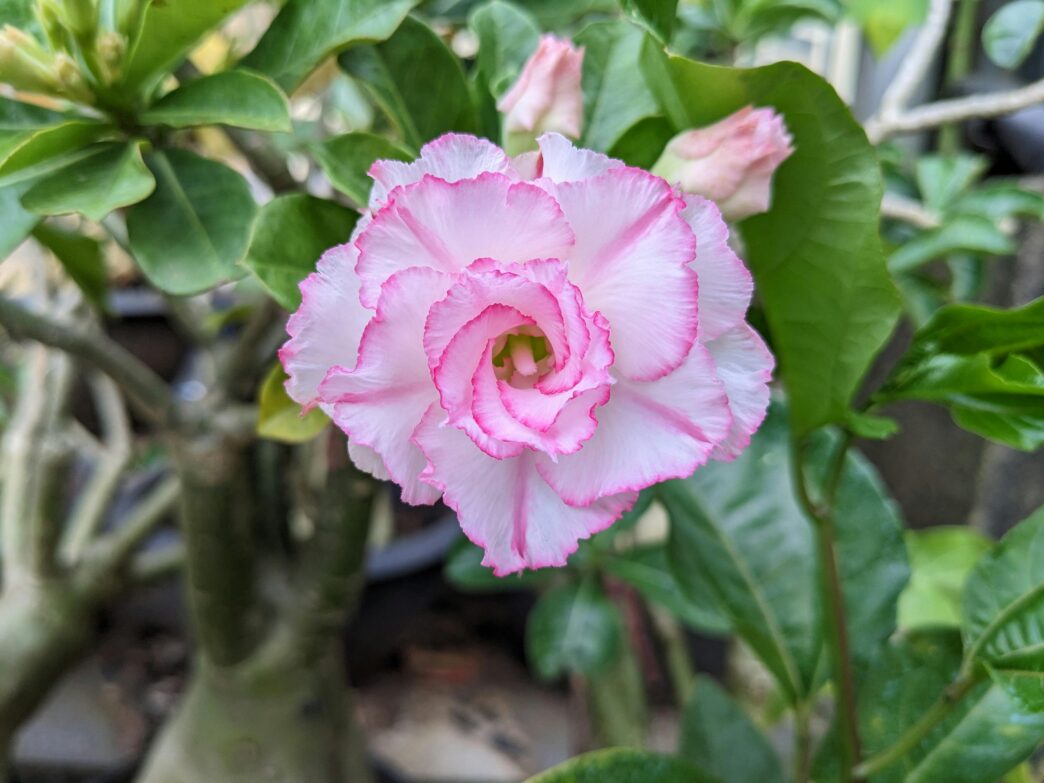The Desert Rose (Adenium obesum) is like the prima donna of the plant world. Its striking blooms and bulbous, bonsai-like trunk make it a showstopper in any garden or indoor plant collection. But don’t let its elegance fool you—this plant is as tough as its name suggests. Native to arid regions of Africa and the Middle East, the Desert Rose thrives on neglect, sunlight, and a little sass. Here’s everything you need to know about growing and caring for this dramatic beauty.
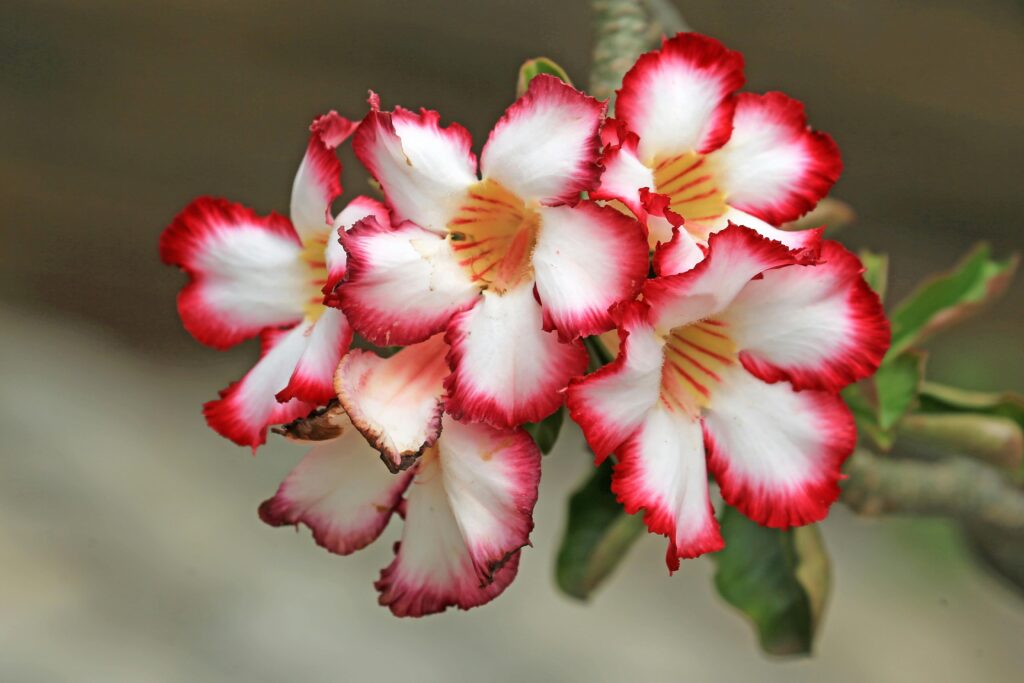
Choosing the Right Spot for Your Desert Rose
Think of the Desert Rose as a sunbather who never forgets sunscreen. This plant thrives in bright, direct sunlight for at least 6 hours a day. Whether you’re placing it indoors or outdoors, pick a sunny spot—your Desert Rose doesn’t do shade drama.
For indoor enthusiasts, a south-facing window is perfect. If your outdoor garden boasts tropical vibes, the Desert Rose will fit right in as long as it’s not exposed to frost.
Pro tip: If you’re moving it outdoors for summer, acclimate it gradually to avoid sunburn (yes, plants get sunburn too).
Soil and Pot: The Foundation of a Happy Plant
Desert Roses despise soggy roots. To keep yours smiling, choose a well-draining soil mix, preferably a cactus or succulent potting mix. If you’re feeling DIY, mix equal parts sand, perlite, and regular potting soil.
When it comes to pots, terracotta is your best friend. Its porous nature prevents overwatering disasters, and trust me, your Desert Rose will thank you. Make sure the pot has drainage holes—nobody likes wet feet.
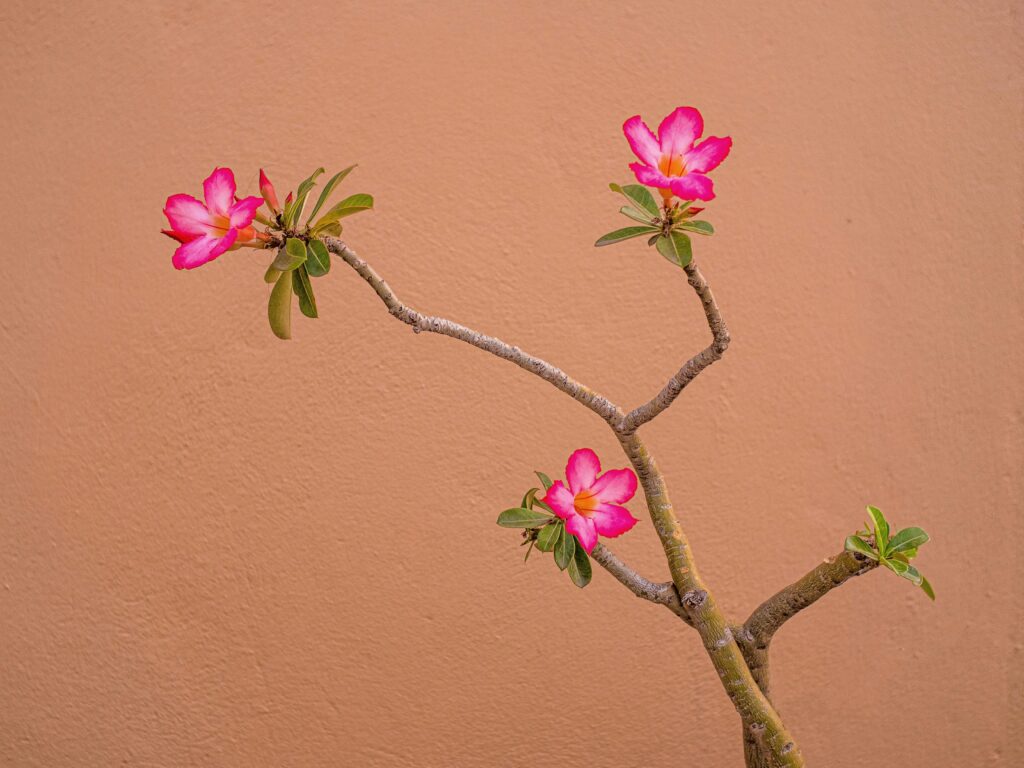
Watering: The Desert Diva Rules
Here’s the golden rule: Less is more. During its active growing season (spring and summer), water your Desert Rose only when the topsoil is completely dry. In the cooler months, water sparingly—maybe once a month.
Overwatering is a cardinal sin in the Desert Rose’s book. It can lead to root rot, a tragedy no plant deserves. If in doubt, err on the dry side.
Pro tip: Stick your finger into the soil to test moisture. If it feels like the Sahara, give it a drink; if not, hold off.
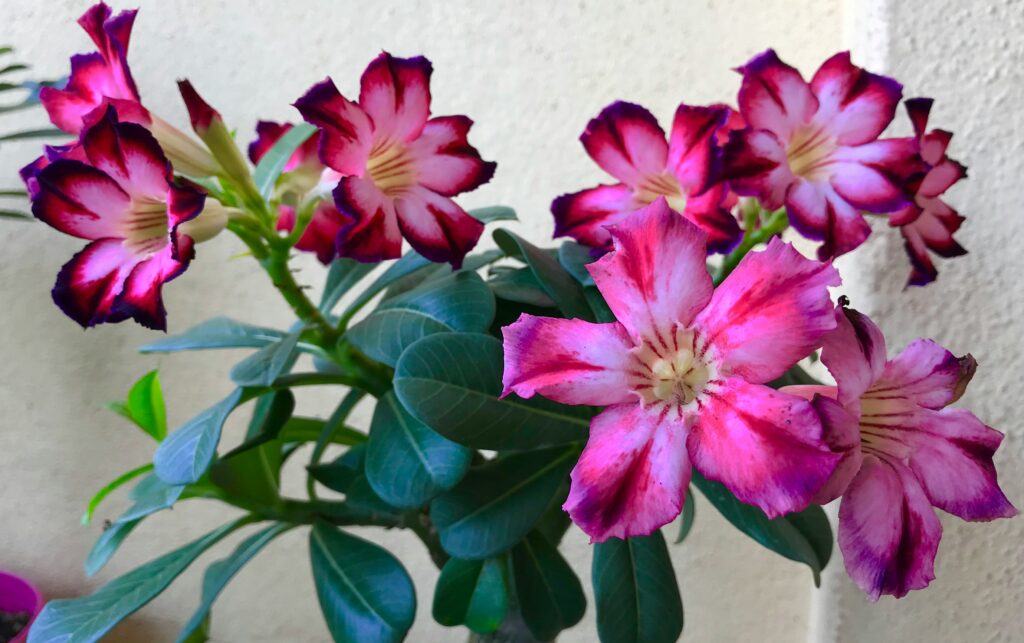
Feeding the Beauty: Fertilizer Tips
The Desert Rose loves to snack but isn’t a glutton. During the growing season, feed it a balanced, water-soluble fertilizer every 4-6 weeks. Look for one specifically labeled for flowering plants or succulents.
Avoid over-fertilizing—it’s the plant equivalent of a sugar rush followed by a crash. Dilute the fertilizer to half strength for best results.
Pruning and Shaping: Keeping It Gorgeous
Pruning your Desert Rose isn’t just about maintenance—it’s an art form. This plant loves a good trim, which encourages bushier growth and more blooms.
- Prune in early spring, before new growth begins.
- Use sharp, clean tools to remove dead or spindly branches.
- Shape it into your desired aesthetic, whether it’s a compact bush or a mini tree.
Warning: The sap is toxic, so wear gloves and keep pets and kids at bay.
Dealing with Pests and Problems
Despite its hardy nature, the Desert Rose has its share of enemies. Aphids, mealybugs, and spider mites are the usual suspects. Regularly inspect the leaves and stems, and if you spot invaders, treat them with insecticidal soap or neem oil.
Root rot is another common issue caused by overwatering. If you suspect this, unpot the plant, trim off rotten roots, and replant it in fresh, dry soil.
Bloom Time: Patience Pays Off
The Desert Rose doesn’t bloom on command—it makes you work for it. Expect flowers in spring and summer, with proper care and conditions. Blooms range from deep pink to bright red, with occasional whites and yellows thrown in for good measure.
To encourage blooming, ensure it gets plenty of sunlight, and don’t overwater or over-fertilize. Remember, the Desert Rose thrives on a little tough love.

Winter Care: Handling the Cold Shoulder
The Desert Rose is not a fan of the cold. If temperatures drop below 50°F (10°C) in your area, bring your plant indoors. Place it in a sunny spot and reduce watering—think of it as putting the plant on a winter break.
Propagating Desert Rose: More Plants, More Fun
Propagation is where the real magic happens. You can grow a Desert Rose from seeds or cuttings. Seeds require patience and a warm, humid environment, while cuttings are quicker and more reliable.
For cuttings:
- Take a healthy branch cutting in spring.
- Let it dry for a few days to form a callus.
- Plant it in well-draining soil and keep it slightly moist until roots develop.
Pro tip: Add rooting hormone to boost your success rate.
Final Thoughts: A Bold, Beautiful Choice
The Desert Rose is more than just a plant—it’s a statement. Its unique appearance, vibrant blooms, and low-maintenance care make it a standout in any collection. With the right mix of sunlight, well-drained soil, and a touch of attention, you’ll have a thriving Desert Rose that steals the show.
So what are you waiting for? Bring a little desert charm into your home or garden, and watch your green thumb flourish! 🌵🌺

